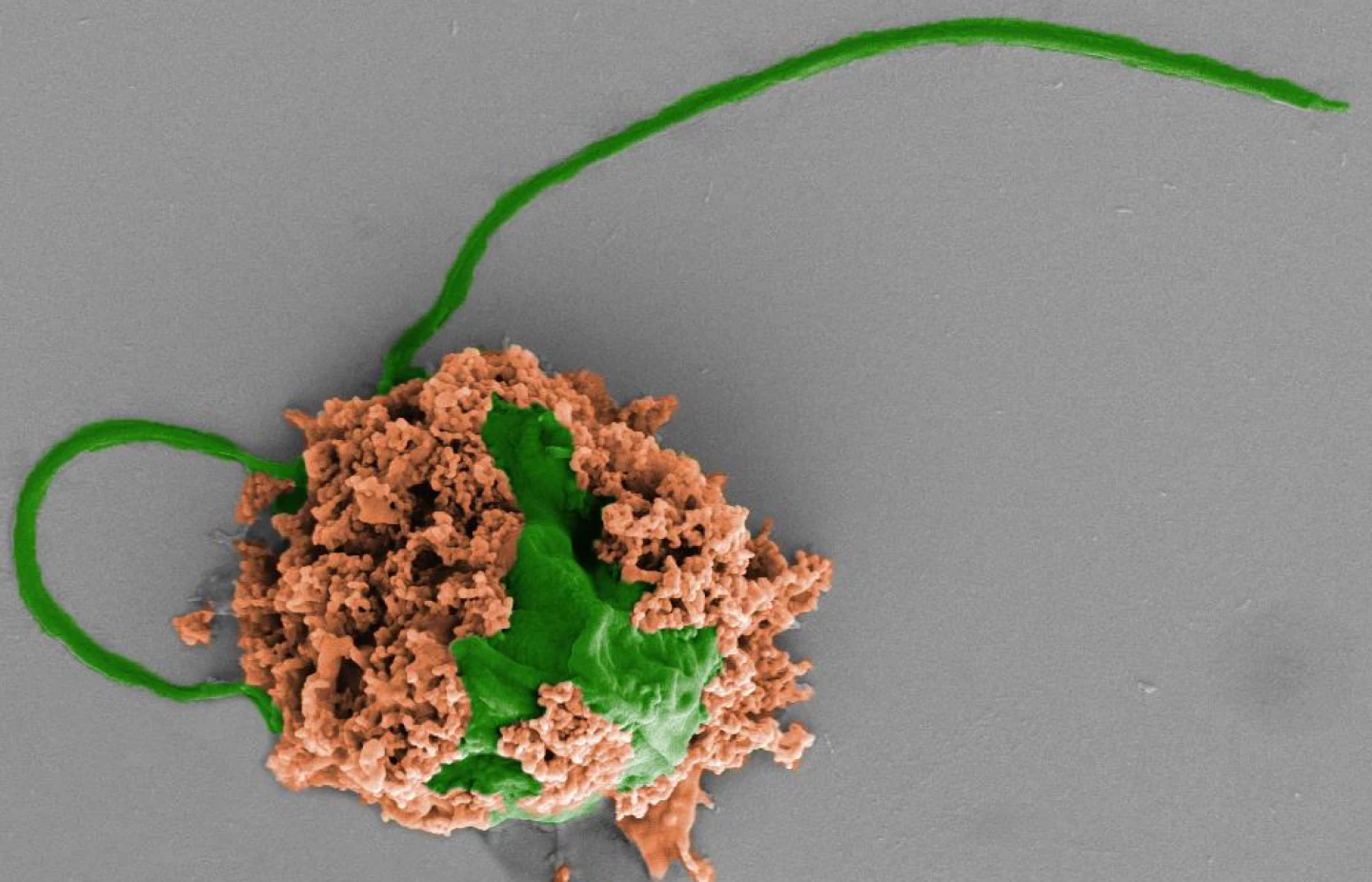Scientists have recently had success in curing mice of a serious type of pneumonia, using what are described as "microrobots." The bots were actually live algae cells, which carried life-saving medication throughout the rodents' lungs.
Led by professors Joseph Wang and Liangfang Zhang, a team at the University of California - San Diego set about treating a group of mice whose lungs were infected with pneumonia-causing Pseudomonas aeruginosa bacteria. If left unchecked, such infections can prove fatal.
For the treatment, individual Chlamydomonas reinhardtii microalgae cells were coated with biodegradable polymer nanospheres. Each of those spheres was filled with antibiotics, plus it was covered with the cell membranes of white blood cells called neutrophils. Those membranes are known for their ability to absorb and neutralize inflammatory molecules produced both by bacteria, and by the body’s immune system.

The microrobots (aka microbots) were administered directly into the lungs of each mouse, via a tube inserted into its windpipe. Once delivered, the microalgae cells swam randomly through the lung passages, spreading their nanosphere payloads as they did so.
As a result, the bacterial infections cleared up within one week, and all of the treated mice survived past 30 days. By contrast, all members of an untreated control group died within three days of becoming infected.
Additionally, another group received the same antibiotics, but via intravenous injection. Although those mice did recover, they required a dosage that was 3,000 times higher than that used in the microrobot treatment. This was due to the fact that while the bots were delivered directly to where they were needed – the lungs – the IV-administered antibiotics were dispersed throughout the body.
What's more, after the bot-treated group recovered, their immune cells digested the algae cells and any remaining nanospheres, leaving nothing behind. The scientists now plan on conducting more research into how the microrobots interact with the host immune system, with hopes of moving on to larger animal and even human trials.
"Our goal is to do targeted drug delivery into more challenging parts of the body, like the lungs. And we want to do it in a way that is safe, easy, biocompatible and long-lasting," said Zhang. "That is what we’ve demonstrated in this work."
A paper on the study was recently published in the journal Nature Materials.
Source: UC San Diego





